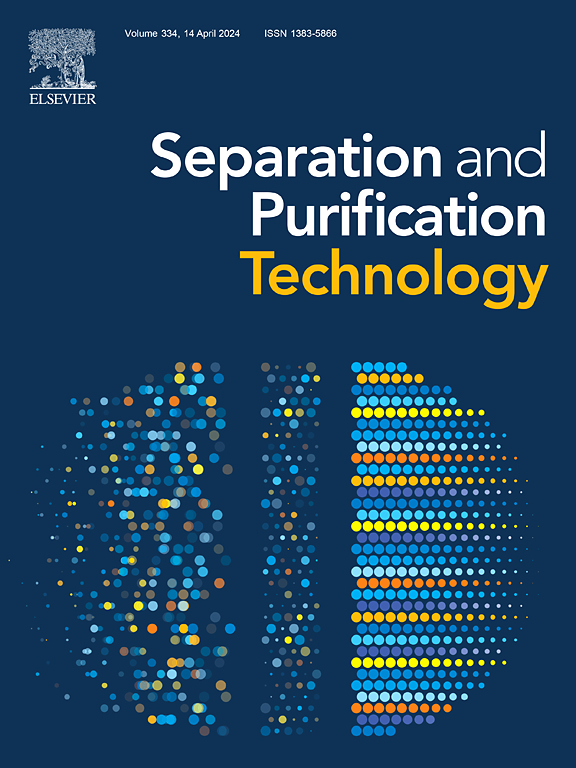Double-defence design for super-antifouling membranes in emulsion separation
IF 8.1
1区 工程技术
Q1 ENGINEERING, CHEMICAL
引用次数: 0
Abstract
The development of super-antifouling membranes is paramount for efficient and sustainable emulsion separation in various industrial applications. This study presents a double-defence design strategy aimed at enhancing the antifouling properties of membranes used in emulsion separation processes. The primary defence mechanism involves the integration of waste-derived oxidized graphene into polysulfone, which significantly enhances flux and antifouling properties. The inclusion of oxidized graphene within the polysulfone membrane resulted in 1.3-fold increase in hydrophilicity with water contact angle of 61 ± 2° and 1.6-fold improvement in separation efficiency. The secondary defence employs a layer of graphene-based foam at the top of the membrane, designed to manage sudden loadings and serve as a protective barrier for the membrane surface. This dual-defence configuration has resulted in 3.7-fold reduction in fouling even after the 10th cycle, ensuring prolonged membrane lifespan and consistent separation performance. The effectiveness of this double-defence design is evidenced by its superior antifouling performance and efficient resource recovery from graphene-based foam in crude and motor oil emulsions. This innovative approach paves the way for the development of next-generation antifouling membranes, offering a robust solution to the long-lasting challenge of membrane fouling.


求助全文
约1分钟内获得全文
求助全文
来源期刊

Separation and Purification Technology
工程技术-工程:化工
CiteScore
14.00
自引率
12.80%
发文量
2347
审稿时长
43 days
期刊介绍:
Separation and Purification Technology is a premier journal committed to sharing innovative methods for separation and purification in chemical and environmental engineering, encompassing both homogeneous solutions and heterogeneous mixtures. Our scope includes the separation and/or purification of liquids, vapors, and gases, as well as carbon capture and separation techniques. However, it's important to note that methods solely intended for analytical purposes are not within the scope of the journal. Additionally, disciplines such as soil science, polymer science, and metallurgy fall outside the purview of Separation and Purification Technology. Join us in advancing the field of separation and purification methods for sustainable solutions in chemical and environmental engineering.
 求助内容:
求助内容: 应助结果提醒方式:
应助结果提醒方式:


